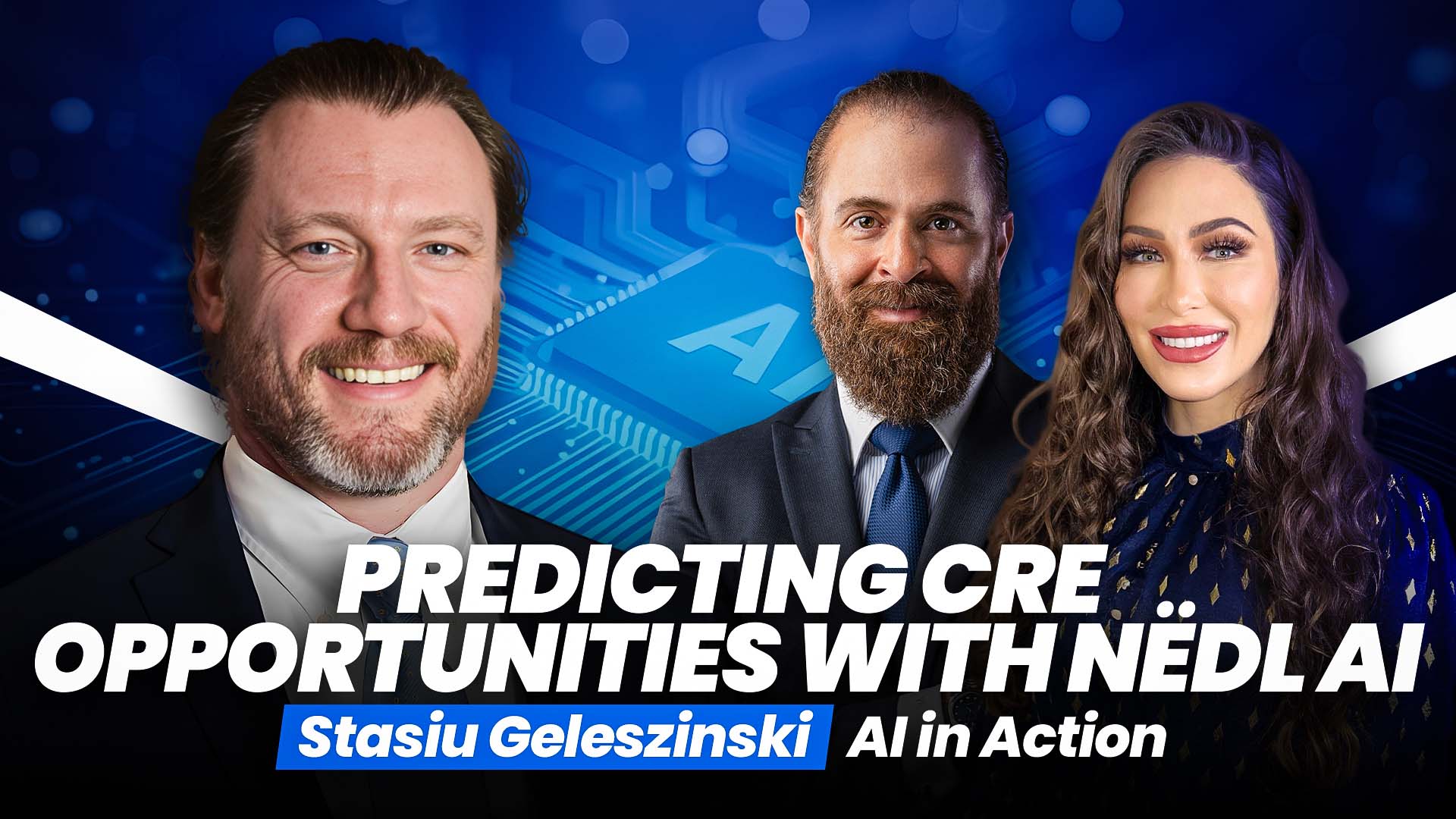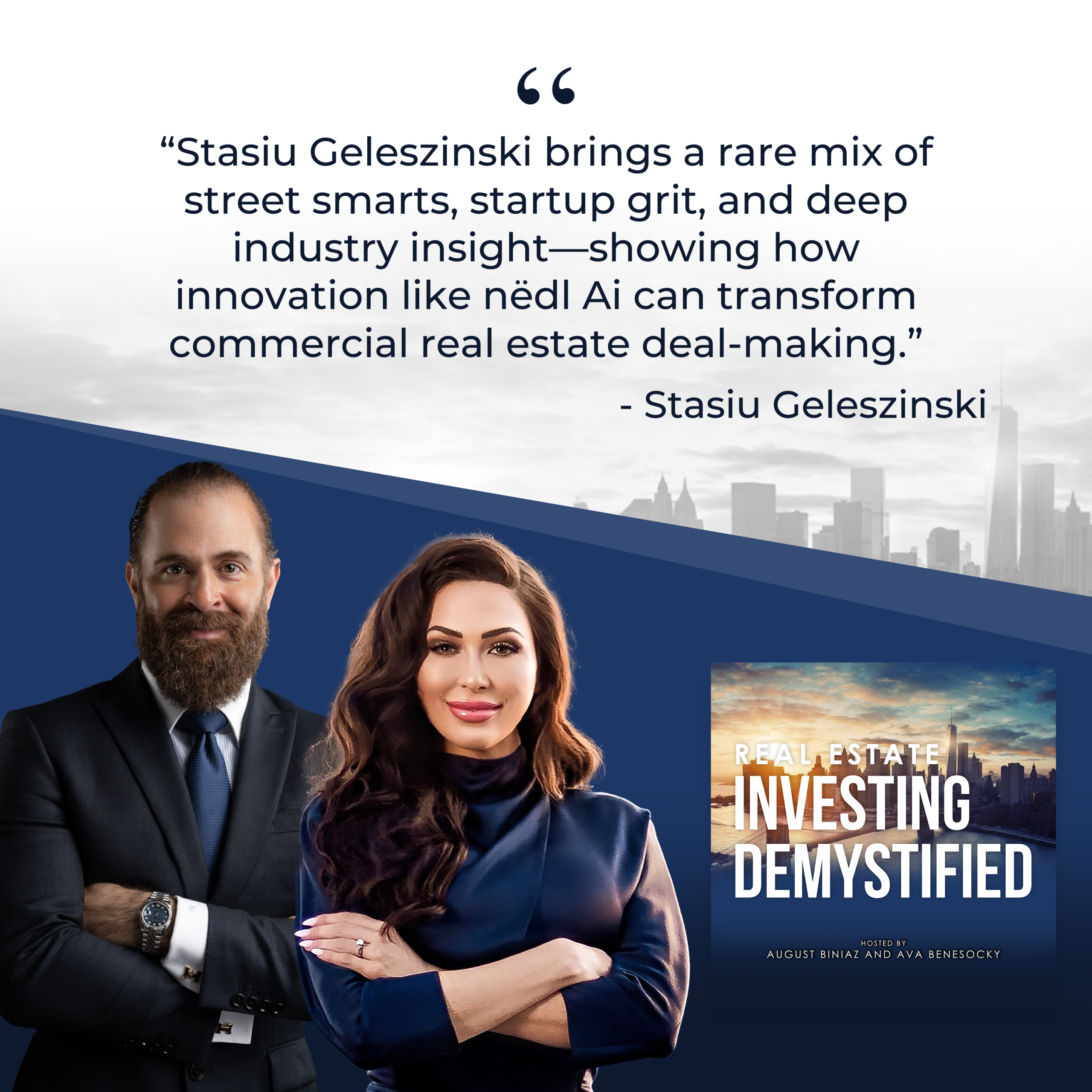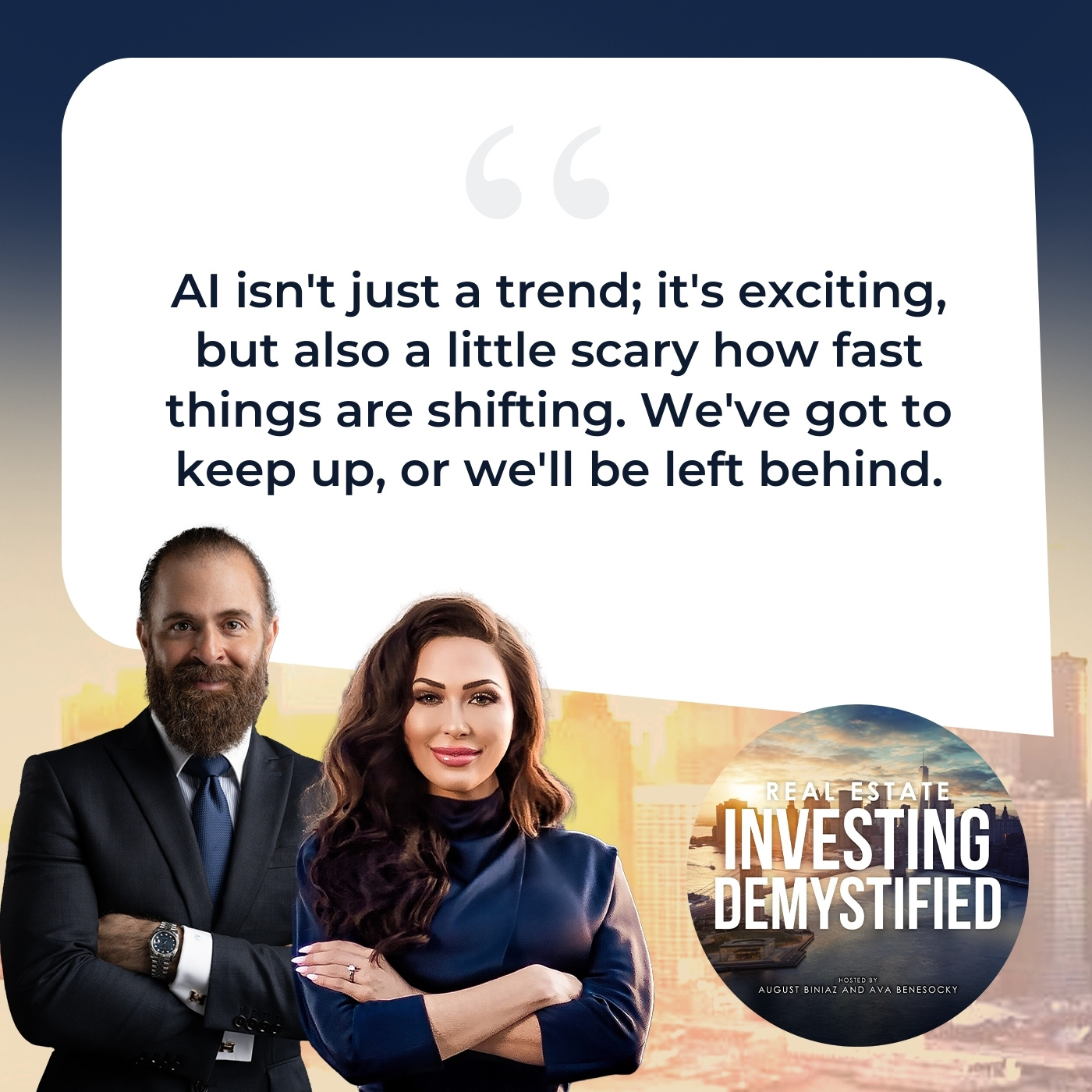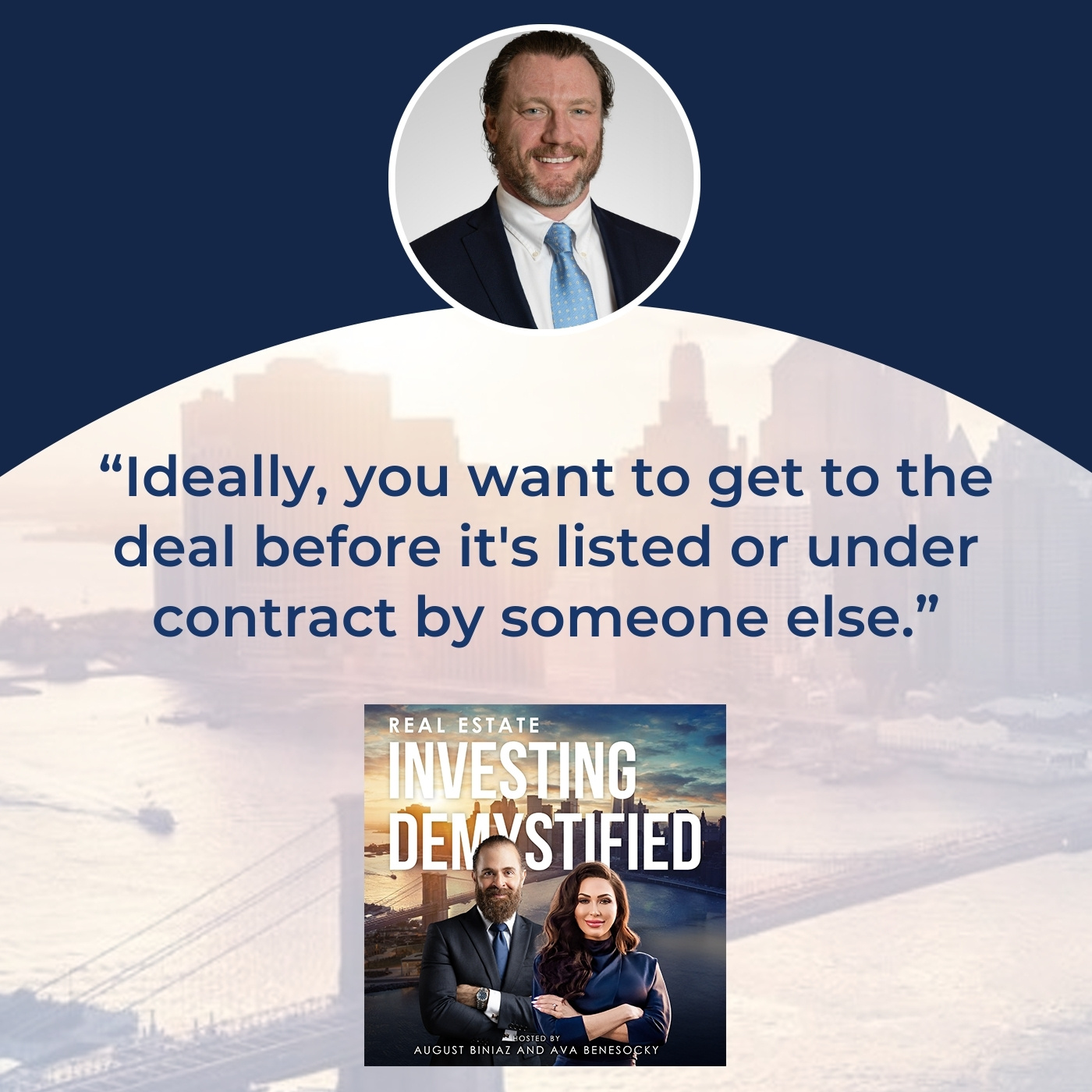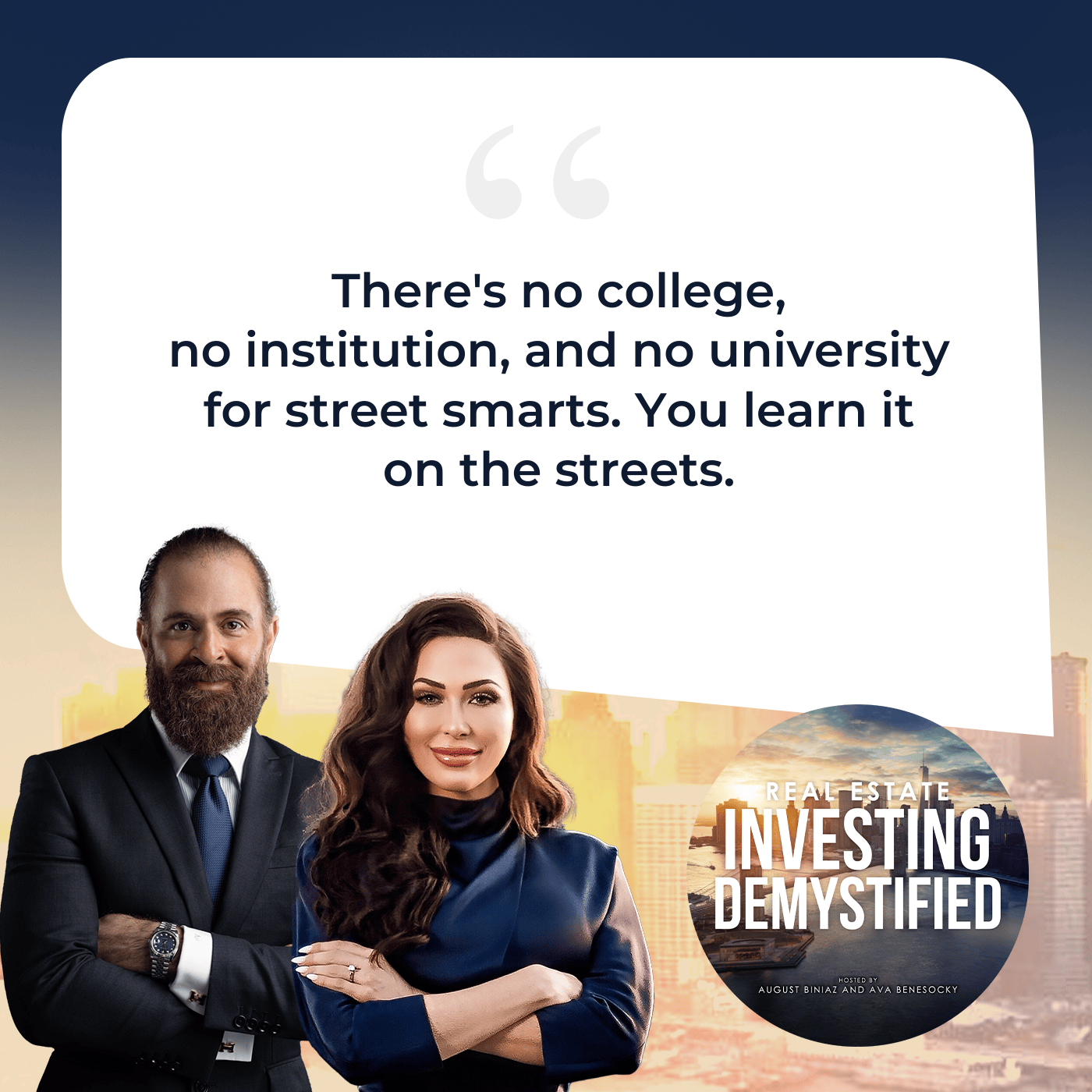Artificial intelligence is reshaping commercial real estate, and predictive tools are opening doors to deals before they even hit the market. In this episode, Stasiu “Stash” Geleszinski—CRE operator, prop-tech founder, and host—shares how his platform, nëdl Ai, Inc., predicts multifamily transactions with remarkable accuracy, helping brokers and acquisition professionals stay ahead of the curve. He also opens up about his own journey from brokering to building a startup, the lessons he’s learned about risk-taking, and his outlook on the current real estate cycle.
Get in touch with Stasiu Geleszinski:
LinkedIn: https://www.linkedin.com/in/stasiugeleszinski
Website: https://nedl.us
If you are interested in learning more about passively investing in multifamily and Build-to-Rent properties, click here to schedule a call with the CPI Capital Team or contact us at info@cpicapital.ca. If you like to Co-Syndicate and close on larger deals as a General Partner, click here. You can read more about CPI Capital at https://www.cpicapital.ca.
#avabenesocky #augustbiniaz #cpicapital
—
Watch the episode here
Listen to the podcast here
Important Links
- Stash Geleszinski on LinkedIn
- Stash Geleszinski on Instagram
- Stash@Nedl.us
- nëdl
- The Stash Cast
- The Art of the Deal
- Think and Grow Rich
- Emotional Intelligence
About Stasiu Geleszinski
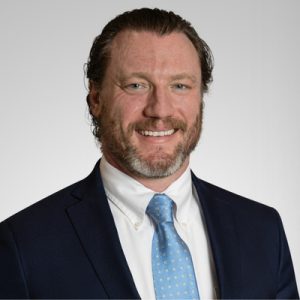
He is Co-Founder & Chief Strategy Officer of nëdl Ai, Inc., a predictive platform that flags mispriced assets and models tenant demand, and Managing Partner at Jepski Development, where he focuses on value-add multifamily, build-to-rent, and boutique Airbnb hospitality projects.
With over $2B in deal exposure across multifamily, retail, and mixed-use, Stash brings a rare blend of brokerage expertise, development experience, and product strategy.
He is the creator of the CRE Broker Blueprint and host of The Stash Cast, where he explores entrepreneurship, venture capital, and the real estate world through candid conversations with founders, investors, and operators.
AI In Action: Stasiu Geleszinski On Predicting CRE Opportunities With nëdl Ai
Welcome back, everyone. There’s been a gag order on me since we started this show years ago for me not to talk about politics. What we’ve learned managing a real estate investment firm, we deal with investors from all diverse types of background, heritage, ethnicity, religions, some international investors and what have you.
The best advice is when it comes to politics, try to be a centrist, neutral and try to not dive into it, but it’s a very interesting day. It coincides with the terrorist attacks in the US of 9/11 that resulted in many dying in the US, but then resulted in millions of people dying in some of them in countries that had nothing to do with 9/11 like Iraq. That’s where we are now.
The US spent around $6 trillion on those never-ending wars. Unfortunately, the world seems to be in this perpetual war. What else also coincides is the America first type right wing influencer Charlie Kirk was assassinated at a college campus. Put a gunshot to his neck. I’m not going to provide any of my opinions. That’s on my Twitter feed. The opinion is divided.
A lot of people have shown support and sorrow for what’s happened. Killing someone for his opinion is wrong no matter how you look at it. The other voice on Twitter is complaining about his views, his certain leaning views that were upset at him. People take politics very seriously. At CPI, we don’t get involved. We just update people on what’s happening.
Also, how it affects real estate. That’s it.
In a bizarre world, imagine that commercial real estate was this thing where only evil people were involved and then they start killing commercial real estate people in this evil world.
I don’t want to imagine.
Imagine that was the case. It wouldn’t be very good but that’s like your opinion, your idea and what you like to do and somebody would kill you over it. Let’s get back to our show.
Shifting things a little bit. In this episode, we’re going to be diving into AI a little bit and how it’s shaking up commercial real estate. I was just watching an interview on Yahoo Finance with Jensen Huang, who’s a CEO of NVIDIA. NVIDIA is a tech company that is best known for making graphic cards, supercomputer chips and that stuff that powers AI. What’s crazy is these numbers that they provided on the growth of how fast things are growing.
NVIDIA’s revenue for 2025 so far is around like $130 billion, which is 114% up from what it was in 2024. Imagine the growth that’s happening. AI isn’t just a trend. It’s exciting, but I always say it’s a little scary how fast things are shifting. We got to keep up with what’s happening and I think that we’re going to be left behind if we don’t keep up with what’s happening with AI because it is growing at such a rapid pace. We’ll get into AI a little bit on the show but let’s get into introducing our guests.
Let’s do it.
We’re joined by Stash Geleszinski. Stash is a commercial real estate operator, PropTech founder and show host. He is a Co-founder and chief Strategy Officer of nëdl Ai, Inc, a predictive platform that flags missed price assets, models tenant demand and managing partner at Jepski Development, where he focuses on value-add multifamily, build-to-rent and boutique Airbnb hospitality projects.
With over $2 billion in deal exposure across multifamily, retail and mixed-use, Stash brings a rare blend of brokerage expertise, development, experience, and product strategy. He is the creator of the CRE Broker Blueprint and host of The Stash Cast, where he explores entrepreneurship, venture capital, and the real estate world through candid conversations with founders, investors, and operators. We’re happy to have you here, Stash. Welcome to the show.
I’m excited to be here. I get to be on the other side, so it’s good. It’s fun.
Stash Geleszinski: PropTech Journey & AI’s Real Estate Revolution
That’s right. We’re shifting a little bit because August was on your show not long ago. Stash, let’s start off with things. Please tell us about your background and how you got your start in real estate.
I grew up in New Hampshire. I went to school at Saint Lawrence in Upstate New York, about 20 miles from the Canadian border. I studied Psychology. Growing up, my mom was a residential agent and she was good. Unfortunately, though, she got cancer and passed away when I was fourteen. I didn’t get a chance to work directly with her but I saw her career and trajectory and said, “Real estate, that’s what I’m going to do.” She had a minivan and drove people around on the weekends. I was like, “I don’t want to do that.”
I read The Art of the Deal and I was like, “Commercial real estate, that’s the thing. That’s what I’m going to do.” I set my mind on that. After I graduated, I went to Boston for about a year. I tried to get into commercial real estate there. The saying is, “If you didn’t go to BC or play hockey, you’re not going to get into brokerage in the Boston Metro Area,” and I did not do either of those things. I worked with my network of alumni and friends. I met with all the large firms but I just couldn’t get any traction. I had some friends from college who had moved to California, so I went to California because that was always the goal. That was always a dream, was to be in Southern California and make my career and fortune in commercial real estate.
I technically achieved part of it because I had my license. I got my first real estate license in February of 2008. It wasn’t a great time to start a brokerage career but I had started with a boutique multifamily shop in Santa Barbara market. The guy who was mentoring me wasn’t much older than I was, but he had been in the business for about ten years at that point. I think he had dropped out of college because he started off as a junior. He had done so well in brokerage that he’s like, “I’m just going to focus on this.”
Young brokers tend to get lost in their spreadsheets. Share on XHe saw my hustle and work ethic and was like, “Do you want to buy an apartment building?” I was like, “That’s exactly what I wanted to do. That’s why we’re here.” We syndicated. It was going to be a package of multifamily properties. Three properties is like an estate sale. I remember Washington Mutual was going to be our lender and I woke up. It must have been a Friday morning and the radio said Washington Mutual had just been closed by federal regulators or taken over by federal regulators. I was like, “I don’t know a whole lot but I don’t think that’s a good thing,” and it was not.
We ended up having to drop the three properties in favor of just one. We worked at a seller financing deal. It was essentially a bridge, but the markets were frozen, essentially. They were non-functioning at that point. At the same time, we had purchased through a different deal, a 40 unit in South LA. I was maybe 24 or 25 years old. Candidly, I didn’t have any business being on that side of the table at that time in my life. I didn’t know enough yet. I’m a person that needs to learn by doing.
You could say, “You could learn by doing that.” The problem is, I don’t come from a wealthy family. I didn’t have the capital to back it up. The 40-unit, we ended up selling to our partner essentially at a loss. He’s done well with it and I’m still in touch with them from time to time. He’s a great guy. The 33-unit that we purchased, we essentially sold at a broken even. We didn’t make a lot of money but we learned a lot less. Having had that experience, we kicked around to a couple of different brokerage shops while I was there.
My partner Josh at the time was like, “We’re not making any money. I have a young family. I’ve got to support myself.” He left and I was like, “I’m not getting out of this because I’ve worked too hard to get into this.” I joined this one firm, and that’s where I learned the trade of brokerage or at least prospecting. What happens with young brokers and this will tie into nëdl a little bit later, is they tend to get lost in their spreadsheets. What I mean by that is they came in and I was guilty of this myself. I’m like, “I’ll make as many calls as I have to go out and start a practice,” and I did.
Part of it is when I get somebody on the phone, I want to be able to know all about them. What happens is, you end up researching and you give them prospects for 15 to maybe 30 minutes and then you call and it goes to voicemail. It’s tough to get momentum that way. I remember he called me into his office and he was probably in his late 60s or early 70s at that point.
He was still on the phone cold calling. He would have the apartment guide open. It was a big book. He would have a ruler, go down the list and just make cold calls. It was amazing. He was like, “Your only job is to be on the phone.” I took that to heart. In the process of that, I ended up finding a deal in Cincinnati. I ran the numbers and I was like, “It’s like a 25 cap.” They were heavy C-Class properties, section 8 type properties.
What year was that?
2010 is when I found it and I moved to Cincinnati in January of ‘11. Having had the experience in South LA and Oxnard, a property manager’s task is a thankless task. Bless their hearts for doing it but if you think about it. You have tenants on one side who don’t want to pay rent or are unhappy with whatever. One thing’s fixed or what have you things for free. You have owners on the other side that are like, “Where’s my cashflow?” That’s the whole point of owning this and you’re just stuck in the middle trying to make a fee.
Property managers — it’s such a thankless task. Bless their hearts for doing it. Share on XI was like, “If we’re going to buy this or if we’re going to do this, we need somebody to essentially asset manage it.” I put my hand above. I was like, “I don’t have anything else to do.” I drove across the country and I got here in January of 2011. I took real estate classes during the broker and I just started doing rent surveys. That’s how I was doing prospecting and at the time, I don’t think the coast had much of a multifamily present and there wasn’t anything readily available. The firm I was at, I don’t think we even had a coaster subscription.
The firm that I was at, we didn’t have any multifamily data sources. He’s like, “Call the auditor.” I went to the auditor’s website or somehow, I got in touch with them. They’re like, “You can just download our whole data set.” I was like, “That’s what I’m going to do.” I had to like teach myself what the land use codes were to try and identify what were multifamily properties. I had to manually search and verify. Fortunately, we had Google because if not, I don’t know how I would have done it. Eventually, I figured out that if it’s this address, it’s going to be this owner. That was the beginning. The deal that I came here for was in receivership. When we put it under contract, it’s 70% occupancy and climbing and then it went to 50% and falling. My partner was like, “I’m out. I’m not doing it.” I was like, “I’m already here,” so that fell apart.
Navigating The 2011 Real Estate Market Bottom
He walked away. I’m sure at that time, in 2011, that was when it was the actual bottom of the real estate market. That was the time when people had their hands on the chief dead and there were a bunch of her closures that were happening as a result of 2008. What did you experience in 2011 when you were boots on the ground in Cincinnati and you were in the real estate world? That deal fell apart when you started to see that there were other grand opportunities that were landing?
Again, given no contacts and no connections. I had to just cold call all my friends or make friends through cold calling rather. At the time, people were like daisy chaining tapes, which means that they would have this portfolio of loans. It would be an Excel sheet and this guy got it from that guy who got it from this woman who got it from that guy. You’re not direct and a lot of them were fallacies. It took me two years to get traction and when I did, I went from like 1 to 2 deals in ’11. In ’12, I did like 3 or 4 and then I did 15 deals.
That is incredible. That makes total sense because the US real estate market went on an absolute bull run from 2011 to 2019. It always excites me to talk to somebody who was buying and selling at that stage. In 2012, I was 22 years old. I just became a broker myself. I was literally just entering. In Canada, I wasn’t in the commercial real estate space but it makes sense that you went from a couple deals to 5 and then to 15 deals.
That was only market dependent. It was possibly the fact of him growing his rolodexes as well.
That, too. You put everything together. How many times have we said, August, that if we got business, if we were in business back then, the trajectory of where we would be at now? We got into business in 2020. 2020 is when everything went to a pause again. It’s exciting to hear stories, so please continue on.
The Genesis Of nëdl Ai: Predicting Real Estate Transactions
The early experiences I’ve had in my career, I consciously said to myself to my own detriment in retrospect, “I need to understand a full market cycle before I dive in and try and court investors,” because it’s serious business as you guys know. I’ve focused my efforts on brokerage and built a team. I went from just me in ’13. In early ’14, I brought on two guys and we were together for ten years and then we had analysts. At the end of my brokerage career, we had seven guys on the team and I was the lead.
In the process of doing that, the process of making calls and being a broker prospecting buyer follow-ups and things like that, you sometimes run out of things to say or reasons to call somebody if they’re not doing deals. I’ve been using this CRM, which was great. It catalogued the whole market, kept track of your calls and relationships between people. It was great. It had this function called match buyers. If you have the buyer criteria in there and you marked a property for sale and put the characteristics of it. It would give you a list of everybody that said that they wanted that type of property.
I was like, “This is phenomenal. What if you had that for sellers?” This was the idea, what if you could use data and analytics to predict real estate transactions? That was the foundation of nëdl. In January of 2020, a friend of mine who happens to be high up in a financial institution here in town said, “My partners and I have a background in software and we want to buy value-add deals.” I laughed at him. I was like, “You and everybody else, but what about this?” I pitched him on the idea and that’s how nëdl got started.
Before going any farther, we’re going to get into it but let’s touch a little bit more on your career as a commercial broker. I get a sense that you were entrepreneurial from early on because not only were you a commercial broker but you’re also an active investor looking at deals. That was the impetus of you moving to Cincinnati. Looking at a live deal where you also needed to keep the lights on so you started brokering there as well. How was the transition there on the personal level? Going from the East Coast to California and then going back again.
It was a challenge. It was not easy but I’ve always chosen the hard path. Maybe I wish I was smarter or what have you.
You were not married or have kids or anything?
No.
Commercial Real Estate Today: A Market Cycle Analysis
It was a little easier as a single guy making the move to new places. It’s fun sometimes. I remember many years ago, many moons went by when I was a single guy. You’re entrepreneurial and brokering deals. You’re also trying to create deals and do deals yourself, and then you figure out in an efficiency, which was you starting out in founding nëdl. Before we get into nëdl and the mechanics and all the details, talk to us a little bit about commercial real estate.
You still keep your eyes closed in the space. You got your finger on the pulse. What are you seeing currently where we are? Especially you being in the space for long enough post-GFC, through COVID and interest rates being dropped to near zero and all the capital flooded into the space. Some syndicators found themselves with their swim shorts below their knees after the tide went out and putting bridge, which is historically not meant for value at deals. Bridge is meant for a deal that’s in distress and you’re trying to bring it to stabilization. It’s supposed to just bridge the gap Hence, the name is on it, but indicators just you got used to putting a bridge to that with high octane debt to financially engineer deals.
Some syndicators found themselves with their swim shorts below their knees after the tide went out. They were using bridge debt, which is historically not meant for value-add deals, but for deals in distress. Share on XI talked to somebody senior or was listening to a show. I’m not sure if it was a direct talk, but they said that a bridge that is perfect will always work, except when it doesn’t. When it doesn’t, you lose it all. You’ve seen that in a lot of firms and some Canadian firms also that were heavily involved in Arizona and lost close to $300 million in the LP equity, totally wiped out and it was all over the news.
Not only them, even Blackstone has to give the keys back for some deals and I believe an office dealing in Las Vegas. Overall, where do you think the market is, particularly the multifamily market? If the market cycle was a clock and 12:00 is the top of the market with the best time and 6:00 is the bottom of the market. What time is it, do you feel like?
Probably, 9:00 I’d say because we’re not fully out of the woods. There’s still some opportunities to be cleared out of the market and some deals that have yet to go bad or go back to the Midwest as intended. Back in 2015, it’s when I first went to NMHC and everybody was like, “We want the smile of the US,” so from the West Coast down through the South West Gulf States and up the East Coast, including Florida. Nobody wanted to talk about the Midwest.
Fast-forward to 2020 or maybe it was ’21. Everybody wanted to come and evaluate opportunities in the Midwest, Cincinnati in particular because we have very strong rental fundamentals. We have a chronic lack of housing for various reasons and this marketing in particular. It’s always a sub-market to sub-market variable, but they wanted to come to the Midwest because it had good, strong, stable fundamentals whereas some deals in Charlotte or Phoenix had not panned out the way that they thought it would for various reasons.
In markets like Phoenix and Houston and even Dallas a little bit, it’s so easy to build multifamily there. You have this chronic oversupply, I’ll say. You always have more products coming online. You’re always seeing properties running specials, concessions and one month free or something like that. We saw it even in Downtown Columbus. There was a boom of building in Downtown Columbus and that’s a very soft submarket of a very strong overall market. Two months free at one point rental rates. Staying steady if not slightly declining. Columbus is one of the strongest markets in the Midwest. I’ll say, excluding Chicago, but of this part of the Midwest where I’m in. It’s a very strong and very desirable market.
It’s a slow and steady market, I’ve heard. You don’t have that boom of a 20% rent growth but you’re also not going to have the big dips as well because of hybrid supply and other issues.
It’s a good diversification to your portfolio.
The Fed is meeting. I believe on their next meeting for the rates and the markets have a 95% or even more that the Fed will decrease rates. Is that what your belief is?
If I had a crystal ball, I would be in a different chair but I think so. Back to the days in brokerage, when you guys started in 2020, there was like a pause on the market from February to about June like nothing was happening. All of a sudden, it was like, “Things are going to be great.” You saw and that was because of the COVID stimulus checks coming in. What you saw happen was, all the tenants were catching up on back rent. Plus, they were out buying TVs and other kick knacks and things like that. The fundamentals of rental properties went through the roof because not only were collections being caught up on but rents were increasing significantly over time.
You also have an interesting migration, too. People are moving more to Texas and Florida to run away from remote workers.
It was the thing to do and then they dropped rates. Fast forward like a year or a year and a half or so, they raise rates real quick and it basically shuts the faucet off.
Eleven consecutive times and there was a pause then two more times, which has brought us close to where we are.
It was very aggressive. From a deal-maker perspective, it was terrible. For the overall economy, it’s hard to say. They probably raise them too quickly, too fast and keep them too high for too long but that’s what happens when you inject trillions of dollars into the economy. Don’t do that. How about that?
Inflation hit like 40-year highs at that point. They panicked and the only lever they had was to increase the rates.
A lot of experts say they did it a little too late. They should have started rates a little sooner. In respect of our time, let’s switch the conversation here. You touched on this earlier, but go ahead, Ava.
nëdl Ai’s Strategy: Uncovering Off-Market Deals
Let’s dive into a nëdl, the company that you co-founded. You did talk about some of the inefficiencies that you saw in the commercial real estate space, but explain the strategy behind nëdl Ai. From what I understand, the platform flags properties that are already listed on the market and I could be completely wrong. Is it overpriced or underpriced?
It’s designed for brokers and acquisition people to go out and get in front of opportunities before they come to market. We’re looking at things like changes in rental rates, occupancies, low maturities, ownership behavior patterns, how often properties of this type class and vintage tend to sell and larger macroeconomic events within the market and the submarket and saying, “How is this property performing?”
We’re putting all those factors together and we’re saying, “We think that this property is maybe medium likely to trade in a lower probability of trading.” If it’s below a certain threshold, we don’t even rank it. It’s designed for brokers and acquisition people to be able to go out and get in front of these before they’re listed by a competitor or purchased by somebody else. You can think of it as lead scoring. Lead scoring a property is to go out and get in front of opportunities before your competitor gets it, either as a broker or as an acquisition person.
The common objection I would hear, especially being not native to the market, and some of my competitors had been in business for 20 to 30 years or they had handed down their practice to somebody else, who would continue the legacy. If someone has sold it to me, if I’m going to list it, I have to sell it with them, but if you bring me a deal off market, I’ll sell it. I heard that so many times and it burned me. It just annoyed me. It pissed me off, is what it did. It’s like, “How can we get in front of these? How can we beat that system? That was where the want and desire came from.
I remember when we were first testing it. I would get like a lead set of 30 deals and inevitably 7 or 8 of them would be in play somehow. I would have it listed or a competitor would have it listed. We were valuing it. It was under contract. It was somewhere in the deal pipeline continuum. It’s like, that’s perfect. That’s meeting the expectations. Ideally, you want to be able to get to it before it gets listed or gets under contract by somebody else. What we found is that some of our models are up to 80% accurate in identifying transactions up to six months in advance.
That means, if there’s 100 properties in a given market that we identify. Up to 80 of those are going to trade over the next six months. We also have a buyer matching algorithm for the brokerage community that says, “Let’s say if this 200 unit and 2,000 vintage asset, if somebody owns maybe a 180 unit deal of late ‘90s or similar early 2000s in Indianapolis. Chances are, they’re going to want to be in Columbus as well.” We rank those owners as likely purchasers and what we found with that, is that 70% of the time the end buyer is in our lead set of the buyer ranking and matching.
nëdl Ai: Reach, Subscription, And Revenue
It is somewhat niche. It’s not like ChatGPT but everybody uses it. The dollar amount is huge because you look at the dollar amount of transactions and commercials or real estate space. Is it particularly for multifamily or all asset classes?
We’ve gone with what you know. We’ve built it around multifamily. The intention is to spread into the other food groups.
That’s still a huge dollar amount but as far as number of actual users that is mainly to acquire guys from boutique firms or in more institutions. Some brokers could possibly use it as well to compete with the acquisition guys. Is it nationwide? Is it regional?
Basically, what we’ve done is we’ve gone through a catalog of the entire United States multifamily property market and ranked each property. We refreshed the leads every month. My full-time charge now is to go out and build users.
Is nëdl a subscription-based platform? What options do people have? Is it similar to CoStar where it’s like a regional subscription or is it a national subscription?
We’re just focused on a national subscription. $300 a month will get you access to every property in the US. Within the platform, you can cut it down into regions or MSAs or even particular ZIP codes if that’s how granular you want to get.
Do certain search criteria.
Does it couple with AI? Is their integration with AI to support it or does it have its own personality?
It’s a machine learning algorithm behind it. The more you use it, the better it gets. We are working on some integrations with some LLMs to be able to have intelligent conversations around approaching owners about why we think that the property might be willing to trade, so equipping our users with some ammunition. Instead of just saying, “I’m using this prospecting platform.” We’re giving them some ammunition to be able to go out and have those conversations.

CRE Opportunities: It’s a machine learning algorithm, so the more you use it, the better it gets.
At some point, we’d love to have you on our webinar series to get a demo, but just very briefly. I’m a user. I got my subscription and I have my region. I’m focusing, let’s say, on the Texas or San Antonio market of Texas multifamily value. You’re predicting when some of these properties have the highest likelihood of coming to the market and trying to be ahead of the puck using a great Canadian hockey player’s analogy to skate to where the puck is going, not where the puck is. Do I also get the data of the sellers as well? Does it have all that information and contact number?
We’ve got contact information, phone numbers, email addresses, everything.
Going back to one of your skills early on. Not only leveraging it for your business, but also your personal life, is cold calling. That’s still a component of this app no matter how great it is. There’s still a component of possibly cold calling.
You still have to go out and build relationships. Instead of calling and saying, “What are you working on these days?” It’s, “I’m calling about this property for this reason or these reasons.” I remember I was giving some demos. These were property owners and it’s like, “Let’s see what you have.” Two properties came up and said to me, “We can’t confirm or deny, we’re definitely looking at selling those.” They nudge, hint, and wink. It was validating.
I got a deal. I had been calling on this owner for a couple of months. It was a 500-unit deal here in Cincinnati. We need to keep flagging it as a hot lead. I talked to them and to their equity partner. I met with him at NMHC and it kept showing up. A few months later, I got an email in my inbox saying, “Can you give us a BOV on this?” It’s like, “I knew it.” It was just proof and validation further that the platform is working.
For some of those smaller sellers, it might be a reminder that, “By the way, your loan is maturing. This property is coming up. The months is a little less sophisticated.” It might be helpful as a reminder.
Stash, how does the company generate revenue? Is it purely subscription based or do you also offer some custom analytics and others?
The Startup Grind: Building nëdl Ai From The Ground Up
We’ve got capability to be able to integrate it into your CRM. That’s got some setup fees associated with it. Each one is specific but it’s predominantly a SaaS based platform.
Going back to being a startup founder, which brings back memories of CPI and the blood, sweat and tears we went through to build CPI as a couple of startup founders ourselves and not going the route of raising seed money or that early-stage money, where you hear all these stories, “All the startups always go to some VC and they raise a bunch of money. They make their lives easy.” They even give the founders themselves a paycheck to be working up. It makes sense.
In our world, I had to liquidate a few properties and assets and you, yourself. A lot of sweat, equity and other things you have to do to get CPI to try to gain traction. Talk to us about that process briefly before we move to the second segment of the show. Again, going back to your entrepreneurial spirit, as a startup founder, aside from finding this inefficiency and this pain point in the commercial real estate space and trying to create the tool to fix it. Did you go on to educate yourself on how to launch a startup and go and join some of these communities? What was that journey like?
Cincinnati’s got a pretty decent startup community and ecosystem. We have PNG here. Kroger is based here. Fifth Third Bank is here, Great American Insurance, and Western and Southern. These large companies want to be able to foster tech and innovation probably selfishly for their own benefit. As a result, we have centrifuges and alloy development. We immersed ourselves in those resources that are available.
I went through an accelerator program, which was like sales school, is what I liken it to. That’s why I started the show as well because I wanted to understand other founders, what their journey was like and also what VCs are looking for. That’s how I started the Stash Cast. I’ve done maybe about 100 episodes at this point. It’s fun.
Did you end up raising any money?
We did an initial friends and family capital raise then we did go out for a seed round and the feedback that we were getting was that we need more users. Here I am.
I was going to ask you, is it through a private placement similar to when we syndicate a real estate deal? Was there offering docs involved?
We’ve got a full carta document vault, all the due diligence, filing and paperwork. All the legal documents are there like, financial projections, tax returns and things like that but it’s different than a real estate deal. In a real estate deal, you’re saying, “We’re buying it for this. Here’s a business plan and here’s going to be our eventual exit.” Maybe it’s similar in that we’re saying, “This is the capital that we need. This is what we’re going to do with it.” You can’t project what an exit might look like.
Also, the valuation can vary widely depending on the founder’s story. It’s different from real estate in that way. There’s also this thing called a safe note, which basically it’s, “Give me money and I will give you shares at some point in the future at some value yet to be determined but it won’t exceed this certain amount.” It’s interesting because you would never do a safe note in a real estate deal. It’s a little bit different that way.
I gave Ava a safe note before she agreed to marry me. That’s a great company. We look forward to watching you grow and for the company, too. We would love to use it ourselves and bring you on one of our webinars for a demo and get our VP of investments, Paul Hopkins to get in touch with you and see if he can get all a demo and start using the software. I’m excited. You’re going to achieve some great things. You have great energy and have a nose for business in finding your way and building things. I’m looking forward to that, but let’s move to the second segment of our show.
The 10 Championship Rounds To Financial Freedom
The ten championship rounds to financial freedom. Are you ready, Stash?
Sure. Let’s go.
We’ll ask you a list of questions. Whatever comes top of mind. Here we go, the first question. Who’s been the most influential person in your life?
Probably my dad. My parents, certainly my mom. She was my best friend. Obviously, I had buddies.
The reason you’re in real estate.
Exactly. Our brains are wired similarly, but my dad because I worked summers for him. That’s what gave me the audacity to take on a full gut renovation project that I have just completed.
What is the number one book you’d recommend?
For what?
Anything that comes to your mind. Be it personal, business, or something that you’ve enjoyed reading. It could be anything.
The first one I would say that was probably the most influential on shaping my career was Think and Grow Rich. I used to listen to that on repeat. I tend to listen to books more than I read because I’m dyslexic. I would also suggest Emotional Intelligence. I forget who the author of that is, but that’s a good one because it helped. I remember listening to that and being like, “That’s why that is what it is.” I studied psychology in college. The whole point was trying to figure myself out. It did not work and then just listening to that book helped put a lot of pieces together.
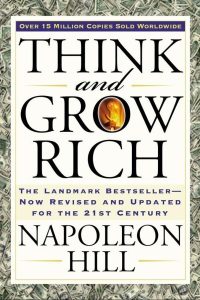
Think and Grow Rich: The Landmark Bestseller Now Revised and Updated for the 21st Century (Think and Grow Rich Series)
I’ve never come across that book.
You used to talk about it all the time, “I want my kids to have emotional intelligence.”
I’m obsessed with emotional intelligence.
It’s very good.
Having inner peace every day and having emotional intelligence when the outside world is blowing up. You could live the best life. With my children, that’s all I’m focused on, is for them to have emotional intelligence. Thank you for sharing. I appreciate it. The next question, Stash. If you had the opportunity to travel back in time, what advice would you give your younger self?
That’s tough. Probably do whatever you have to do. Start buying at the same time that you’re brokering. The words that are coming to me are like, fake it till you make it, but that’s not exactly. It’s okay to go out there, put yourself out there and try new things. It’s okay to fail, too. It sucks but it’s okay.
Nice. That’s what builds you. Next question, what’s the best investment you’ve ever made?
Myself. When I was trying to get my career off the ground, I had a couple bucks and I hired a brokerage coach through a Mastermind group. I credit that in tandem with my hard work, but in helping get me from like 4 deals to 15 and building a team and so on and so forth.
Next question is, what’s the worst investment you’ve ever made and what lessons did you learn from it?
A hair salon. It was terrible. It was a bad deal. I’ll just leave it at that. Don’t go from a business where you are a white-collar worker with no experience in a business that you’re starting, then go start a business thinking that the folks that you’re employing are going to behave the same way that the people in your previous work environment behaved because they won’t and they don’t. You’ll fail.

CRE Opportunities: Don’t transition from a white-collar role with no relevant business experience into starting your own business, expecting your employees to behave like those in your previous environment. They won’t, and you’ll fail.
Especially if the stylist doesn’t know how to cut your hair. It’s like buying a restaurant that you despise the food like.
Next question. How much would you need in the bank to retire now? What’s your number?
$10 million.
If you could have dinner with someone dead or alive, who would it be?
I’ve never thought about that. Maybe like Elon Musk. That’d be fun.
It would be.
He’s been some of the common answers we get.
If you aren’t doing what you’re doing now, what would you be doing now?
Anything outside of business. Any aspiration you had or sports or arts or things like outside of this world or outside of outside of business thing.
I have a couple of answers for this. I have a couple of dream careers so that would be a great time. One of them would be to be a rock star like a full-on rock star like Axl Rose in his heyday. That would be awesome. Another would be to be a chef in a five-star restaurant. That would be a tremendous experience. The last one is a race car driver like an F1 driver. That would be awesome but the more real thing. Something that is on my vision board that I put up on Facebook a couple months ago.
I want to have a minimum of 10-acres out in the country. The goal was always to have a vineyard. I would like to expand it outside of that and have some fruit trees and a vegetable garden and then to have enough land, where you can also have some cool tricks out like Airbnb cabins as well, where you can have an all-encompassing compound almost with the main house being my dwelling. Also, have it be like a communal place where you welcome the guests, have tastings and dinners and experiences things like that. That is something that’s actively in my goal set that I’m working towards.
Very achievable. Interesting enough, that’s one of our dreams, Ava and I. The only difference is a ranch and instead of Airbnb’s. It’s just a bunch of our kids and our kid’s kids and our family and friends coming and staying in places there.
Tons of fun things to do.
San Antonio is a place that’s great for the price for ranches. That’s where we’re looking. Let’s keep going.
Next question is, book smart or street smarts?
Am I a books mart?
What would you rather?
What’s better, book smarts or street smarts for anybody?
It’s like the nature nurture. You have to have a combination of both. This is tough. My grandfather on my mom’s side was a very book smart and intelligent person. He has patents to his name and helped design radar and all that but he didn’t have emotional intelligence or the street smarts, as you say. He struggled through his career. He struggled to climb the corporate ladder. That’s an example of you can have all the intelligence in the world, but if you don’t have the street smarts of it, it’s not going to work out well.
You don’t go anywhere with it.
How about in your business as a broker talking to all those property owners? Some people you talk to, you can tell they’ve been to colleges and Ivy league. You get a sense, and some people just seem like a guy who learned everything on the street. How about those interactions? Who do you feel could do a better hustle? From the two clients you had, the books mart client. If they went into business or they had some other conflict.
It’s a street smarts guys. The guys with the high diplomas. They’re like, “I’m smarter than you. I have a better degree. I went to a better school, etc.” Whereas, the guys that started a lawn mowing business when they were 12 years old or 14 and have built up into a massive empire. Those are the guys that you can just have a real conversation with too because they come from a more common stock. They’ve made it in this otherwise challenging world.
Hopefully, our boys will have both book smarts and street smarts. Not judging anybody or anything like that, but I notice a lot of book smarts people too hide behind closed doors or they’re more risk adverse. Some of the people that I know. Not everybody.
It teaches you to follow a certain curriculum or follow the process or these stuff and there’s been a lot of success. Book smarts people run the world but there’s also street smarts people who do tremendously well as well.
When they get the best of both worlds, that’s just amazing.
There’s no college, no institution, and no university for street smarts. You learn it on the streets. That’s a big difference there.
Stash, last question, if you had $1 million in cash and you had to make one investment now. What would it be?
Levered or unlevered?
That was a good question. You can leverage if you wish.
I would lever up and buy an apartment deal.
Let’s end things off by letting everybody know the best way they can reach you.
It’s Stash@Nedl.us. I’m on LinkedIn and Instagram. I look forward to hearing from you.
That’s how we met, on LinkedIn. Thanks for coming on and sharing all your wisdom and knowledge. I look forward to meeting you in person one day soon.
Thanks, Stash.
Thanks for having me.


